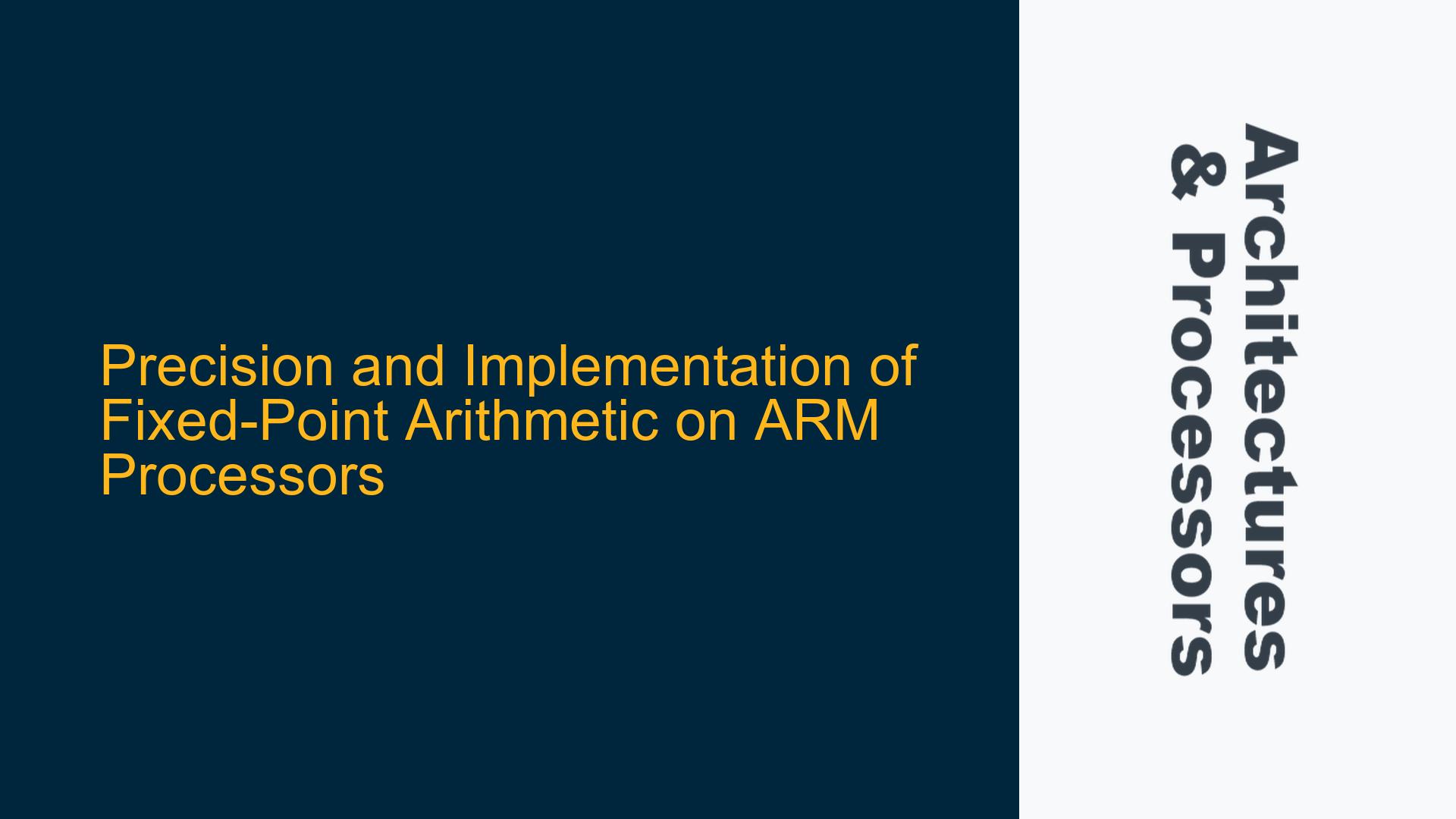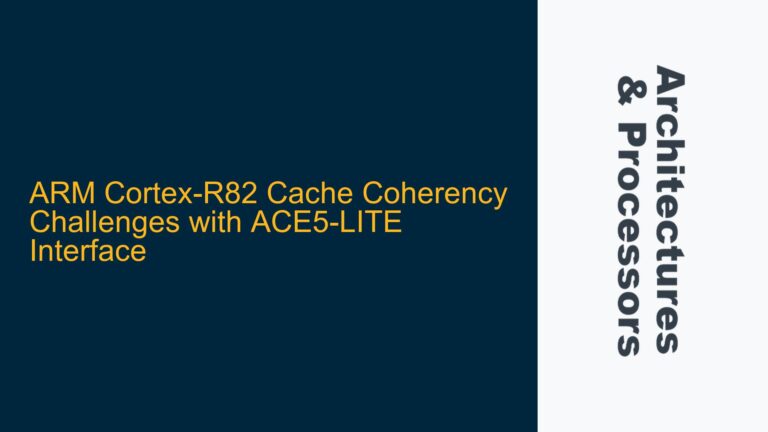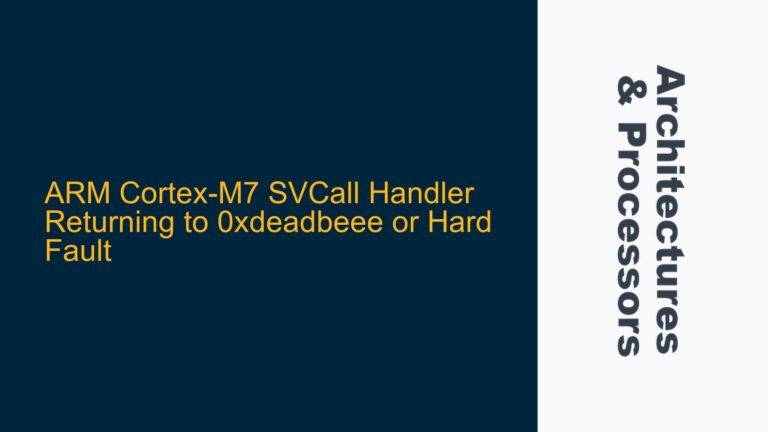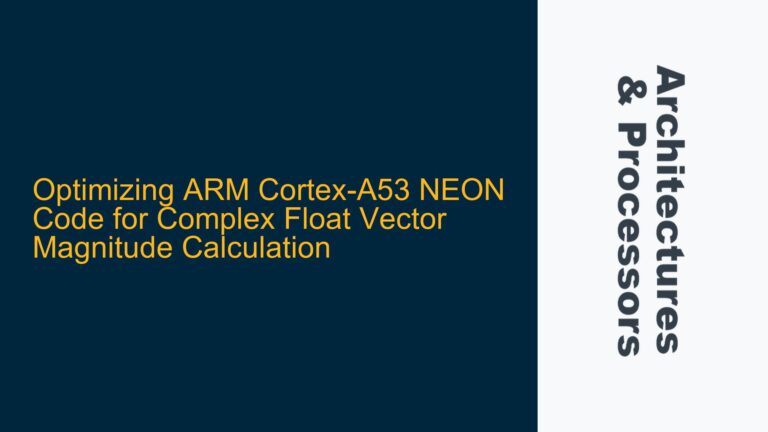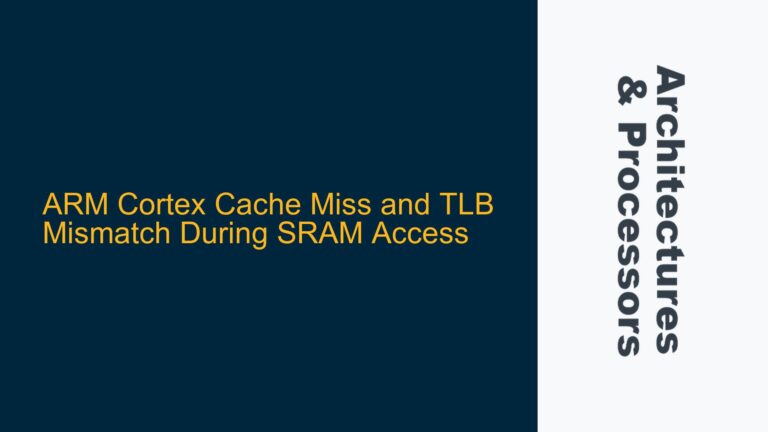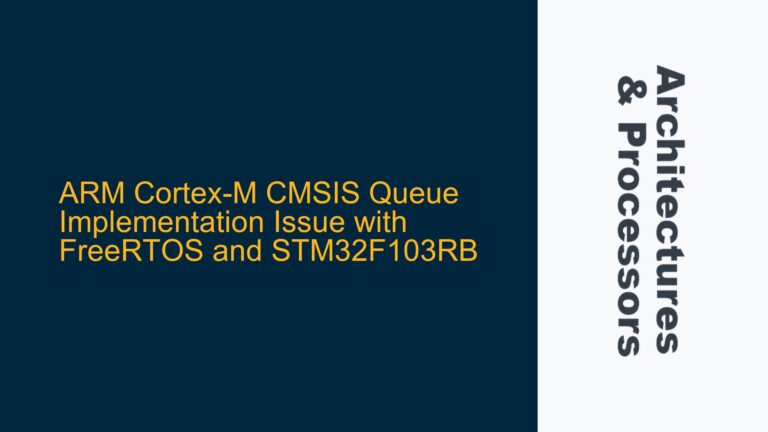Understanding Fixed-Point Arithmetic Precision in ARM Processors
Fixed-point arithmetic is a critical topic in embedded systems, especially when dealing with processors that lack a Floating-Point Unit (FPU). The precision of fixed-point arithmetic is inherently tied to the bit-width of the processor and the specific fixed-point representation used. For a 16-bit processor, the precision is determined by how the fixed-point numbers are scaled and represented. Typically, fixed-point numbers are represented in a Q-format, such as Q15 or Q31, where the number of fractional bits is explicitly defined. In a Q15 format, for example, 16 bits are used to represent a number with 15 fractional bits and 1 sign bit. This allows for a range of -1 to approximately 0.999969482421875 with a precision of 2^-15, or about 0.000030517578125.
The precision of fixed-point arithmetic is also influenced by the operations performed. Addition and subtraction are straightforward, but multiplication and division require careful handling to maintain precision. When two Q15 numbers are multiplied, the result is a Q30 number, which must be scaled back to Q15 to fit within the 16-bit register. This scaling process can introduce rounding errors, which accumulate over multiple operations. Division is even more complex, as it often requires iterative algorithms or lookup tables to approximate the result, further reducing precision.
The number of significant digits retained in fixed-point arithmetic depends on the Q-format used. For a Q15 format, the precision is roughly 4-5 decimal digits. This is significantly lower than the 7-8 decimal digits of precision offered by a 32-bit floating-point number. However, fixed-point arithmetic can be more efficient in terms of both speed and power consumption, making it a preferred choice in resource-constrained environments.
Distinguishing Fixed-Point Processors and Their Compiler Dependencies
Not all processors without an FPU are fixed-point processors. The distinction lies in how the processor handles arithmetic operations. A fixed-point processor, such as the C55XX series, is specifically designed to perform arithmetic operations using fixed-point representations. These processors often include specialized instructions for fixed-point arithmetic, such as saturation and rounding, which help maintain precision and avoid overflow.
On the other hand, general-purpose processors like the Cortex-M3 can perform fixed-point arithmetic but are not optimized for it. The Cortex-M3, for example, lacks dedicated fixed-point instructions, relying instead on the compiler to generate efficient code for fixed-point operations. This means that the performance and precision of fixed-point arithmetic on such processors are heavily dependent on the compiler’s ability to optimize the code.
The experience shared by developers on fixed-point processors is not universally applicable. The behavior of fixed-point arithmetic can vary significantly depending on the processor architecture, the specific fixed-point format used, and the compiler’s optimization capabilities. For example, a fixed-point algorithm that works well on a C55XX processor may not perform as expected on a Cortex-M3 due to differences in instruction sets and compiler optimizations. Therefore, it is crucial to understand the specific characteristics of the target processor and compiler when implementing fixed-point arithmetic.
Optimizing Fixed-Point Arithmetic for ARM Processors
To achieve the best possible precision and performance when using fixed-point arithmetic on ARM processors, several strategies can be employed. First, it is essential to choose the appropriate Q-format for the application. For a 16-bit processor, the Q15 format is commonly used, but other formats such as Q7 or Q23 may be more suitable depending on the range and precision requirements of the application.
Second, careful attention must be paid to the handling of multiplication and division operations. When multiplying two Q15 numbers, the result should be shifted right by 15 bits to convert it back to Q15 format. This shift operation can be combined with rounding to minimize precision loss. For division, iterative algorithms such as Newton-Raphson can be used to approximate the result, but these algorithms must be carefully implemented to avoid excessive computational overhead.
Third, the use of compiler intrinsics and assembly language can help optimize fixed-point arithmetic. Many ARM compilers provide intrinsics for fixed-point operations, which can generate highly optimized machine code. In some cases, hand-written assembly code may be necessary to achieve the desired performance and precision. However, this approach requires a deep understanding of the processor’s instruction set and should be used sparingly.
Finally, it is important to validate the precision and performance of fixed-point arithmetic through rigorous testing. This includes both unit testing of individual arithmetic operations and system-level testing to ensure that the overall application meets its precision and performance requirements. Tools such as cycle-accurate simulators and hardware debuggers can be invaluable in this process.
In conclusion, fixed-point arithmetic on ARM processors offers a powerful tool for implementing efficient and precise numerical computations in resource-constrained environments. However, achieving the desired precision and performance requires a deep understanding of the processor architecture, the specific fixed-point format used, and the compiler’s optimization capabilities. By carefully selecting the appropriate Q-format, optimizing critical arithmetic operations, and validating the results through rigorous testing, developers can harness the full potential of fixed-point arithmetic in their applications.
